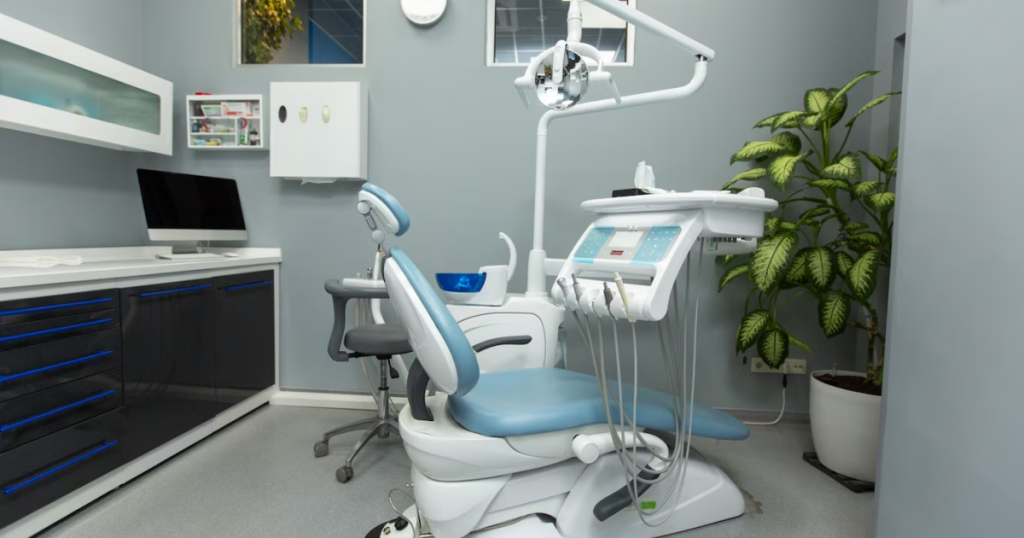
Building a successful dental practice extends beyond clinical expertise. It involves fostering a patient-centered culture that prioritizes the well-being and satisfaction of those who walk through your doors. If you want to create a patient-centered culture at dental practice, you need to implement proper strategies, train your staff and adjust your strategies according to patient feedback.
In this blog post, we will explore the key elements of creating a patient-centered culture in your dental practice, providing actionable strategies to enhance the overall patient experience.
Understanding Patient-Centered Care
Patient-centered care is more than just a buzzword in the healthcare industry—it’s a transformative approach that puts the patient at the heart of the care process. This involves tailoring treatments to individual needs, engaging patients in decision-making, and prioritizing open communication.
Building Trust and Communication to Create a Patient-Centered Culture at Dental Practice
Trust is the foundation of any meaningful relationship, and the dentist-patient relationship is no exception. Patients are more likely to follow through with recommended treatments and maintain regular appointments when they have confidence in their dental care providers.
This trust in the dental area is built not only on clinical expertise but also on the way patients are treated and the overall experience they have within the practice.
Strategies for Building Trust with Patients
Transparent Communication
Open and honest communication is key to building trust. Ensure that patients fully understand their diagnoses, treatment options, and associated costs. Avoid jargon and use language that is easily understandable. Encourage questions and take the time to address any concerns to create a patient-centered culture at dental practice.
Active Listening
To create a patient-centered culture at dental practice, actively listening to patients demonstrates that their concerns are valued. This involves giving them your full attention, maintaining eye contact, and paraphrasing their concerns to ensure mutual understanding.
Empathy in Patient Interactions
Empathy goes a long way in establishing trust. Understand and acknowledge the emotions that patients may be experiencing, especially if they have dental anxiety or fear. A compassionate and empathetic approach helps create a supportive and trusting environment.
Arranging a Comfortable Environment To Create a Patient-Centered Culture at Dental Practice

Beyond clinical excellence and effective communication, the physical environment of your dental practice plays a crucial role in shaping the overall patient experience. Creating a comfortable and welcoming atmosphere contributes significantly to reducing anxiety, building trust, and ensuring that patients feel at ease during their visits.
A. Importance of a Welcoming Atmosphere
The first impression matters, and the ambiance of your dental office sets the tone for the patient’s entire experience. To create a patient-centered culture at dental practice, you should focus on a welcoming atmosphere.
- A welcoming atmosphere helps alleviate anxiety, making patients more likely to return for regular check-ups and follow through with treatment plans.
- It also contributes to a positive reputation, as satisfied patients are more likely to recommend your practice to friends and family.
B. Design Considerations to Create a Patient Centered Culture at Dental Practice
- Waiting Area Aesthetics
Create a welcoming and calming waiting area. Consider comfortable seating, natural lighting, and tasteful decor. Avoid sterile and intimidating environments that may increase patient apprehension.
- Staff Demeanor and Professionalism
The attitude and professionalism of your staff greatly impact the perceived comfort of your practice. Ensure that your staff is friendly, approachable, and ready to assist with any patient inquiries.
- Comfort-Focused Amenities
Small touches can make a big difference. Offer amenities such as reading materials, soothing music, or a beverage station. These thoughtful additions lead to create a patient-centered culture at dental practice.
Enhancing the Patient Experience to Create a Patient Centered Culture at Dental Practice
- Recognize that each patient may have different preferences, pain thresholds, and priorities. Personalizing care demonstrates a commitment to the individual well-being of your patients.
- To create a patient centered culture at dental practice, empower patients by providing clear and understandable information about their oral health, treatment options, and potential outcomes.
- Use visual aids and simplified language to ensure comprehension.
- Encourage patients to actively participate in decision-making by discussing options, risks, and benefits to create a patient centered culture at dental practice.
- Dental anxiety is a common barrier to optimal oral health. Take the time to address patient concerns and fears, whether through open dialogue, relaxation techniques, or, if necessary, sedation options.
Related: What are The Best Ways to Deal with Dental Patient Complaints?
Empowering Staff to Create a Patient-Centered Culture at Dental Practice

A patient-centered culture extends beyond individual interactions; it involves creating a cohesive and patient-focused mindset among your entire staff.
- Implement thorough training programs that emphasize not only clinical skills but also effective communication, empathy, and customer service.
- Ensure that your staff is equipped with the tools to navigate diverse patient interactions.
- To create a patient centered culture at dental practice, demonstrate a patient-centric mindset in your own interactions with staff and patients.
- Regularly check in with staff to understand any challenges they may be facing in providing patient-centered care.
- Establish mechanisms for gathering feedback from both staff and patients to create a patient centered culture at dental practice.
- Provide opportunities for staff to engage in continuous learning and development.
Measuring and Improving Patient Satisfaction
A. Implementing Patient Satisfaction Surveys to Create a Patient Centered Culture at Dental Practice
- Designing Effective Surveys
Develop well-structured surveys that cover various aspects of the patient experience, from initial contact to post-treatment follow-up. Keep questions clear, concise, and focused on actionable insights.
- Anonymous Feedback Options
To create a patient centered culture at dental practice, encourage honest feedback by providing anonymous survey options. Patients are more likely to share their genuine thoughts and experiences when they feel their responses are confidential.
B. Analyzing Feedback and Making Necessary Improvements
- Thorough Data Analysis
Regularly analyze the collected survey data to identify trends, recurring issues, and areas of excellence. Pay attention to both positive feedback and constructive criticism to gain a comprehensive understanding.
- Implementing Actionable Changes
Translate survey findings into tangible actions. Whether it’s addressing specific concerns raised by patients or amplifying practices that received positive recognition, demonstrate to your patients that their feedback leads to positive change.
C. Acknowledging Areas for Growth to Create a Patient Centered Culture at Dental Practice
- Recognition of Positive Contributions to create a patient centered culture at dental practice
Acknowledge and celebrate instances where staff members or the practice as a whole received commendations from patients. This positive reinforcement motivates the team and reinforces a patient-centered mindset.
- Constructive Team Discussions to create a patient centered culture at dental practice
Create a culture where continuous improvement is discussed openly among the staff. Regular team meetings can be used to collaboratively address challenges, share success stories, and brainstorm innovative solutions.
Conclusion
As dental practitioners, the commitment to patient satisfaction extends beyond the treatment chair—it involves fostering a culture that prioritizes open communication, empathy, and continuous improvement. By implementing the strategies discussed, you not only proceed to create a patient centered culture at dental practice but also contribute to the overall success and reputation of your practice. If you have more questions regarding this, visit our website Smile SEO and learn new things related to dental business.